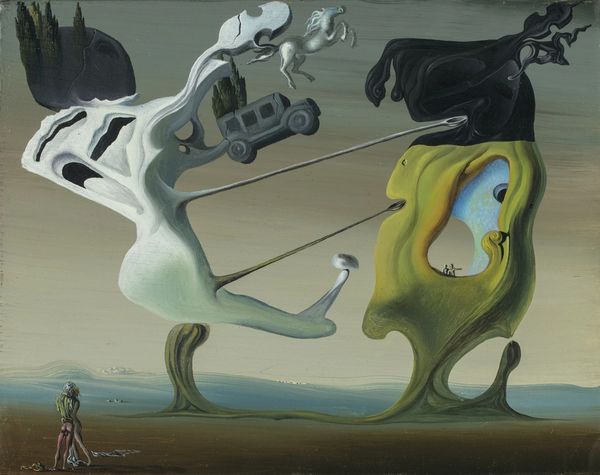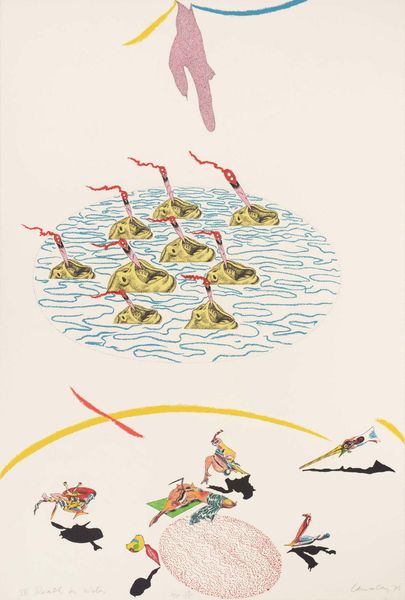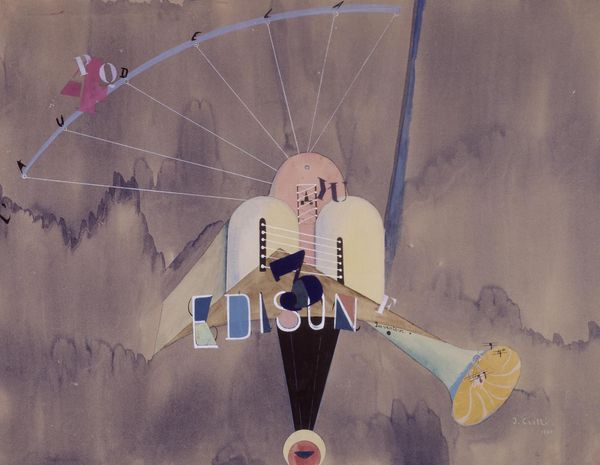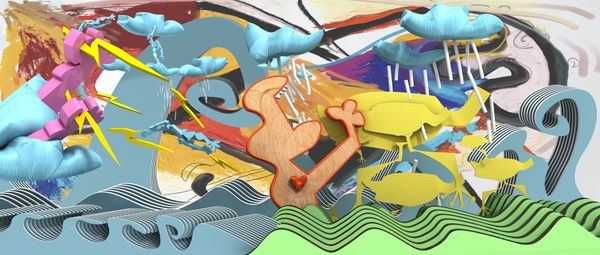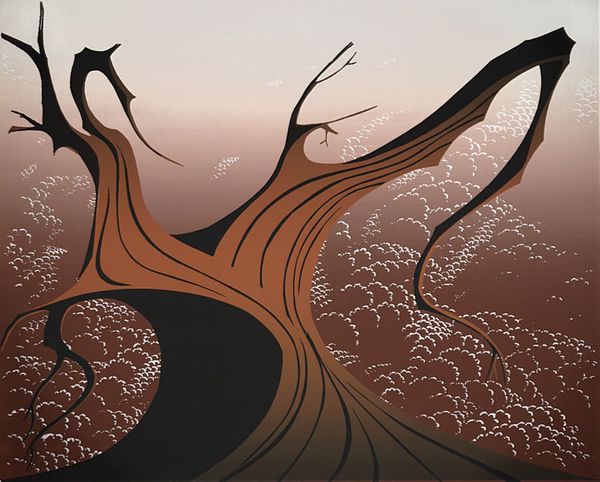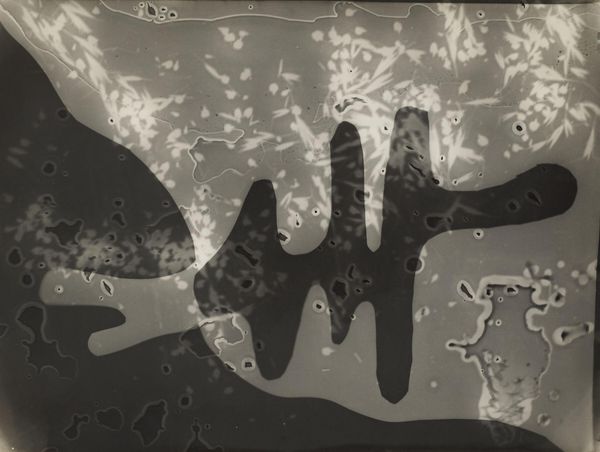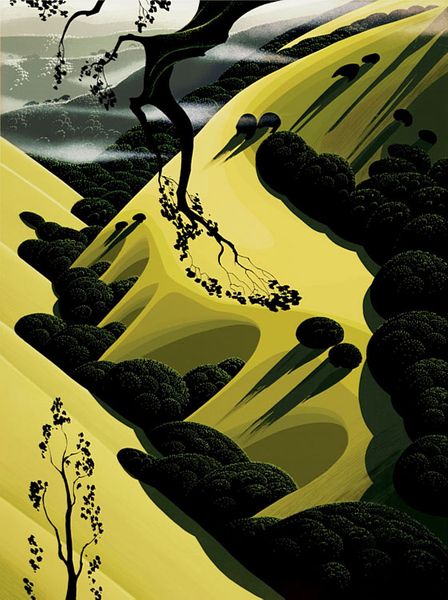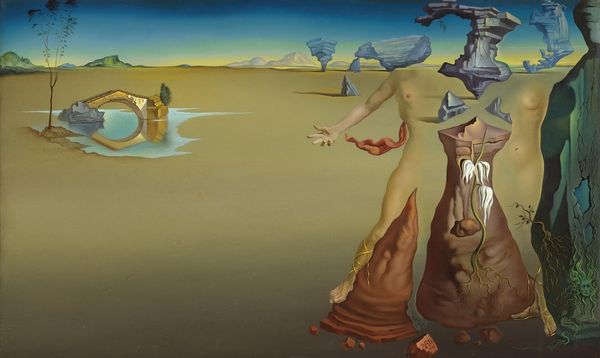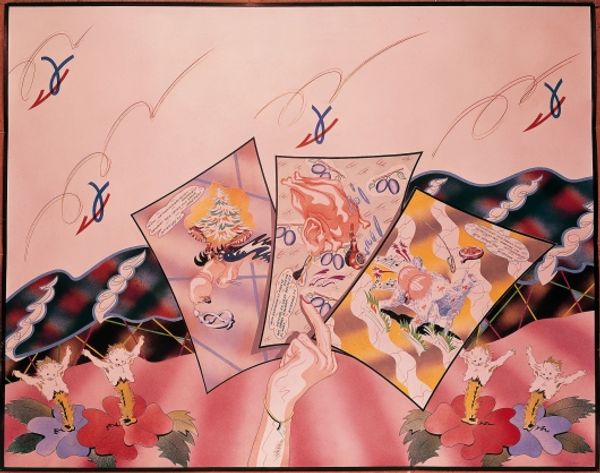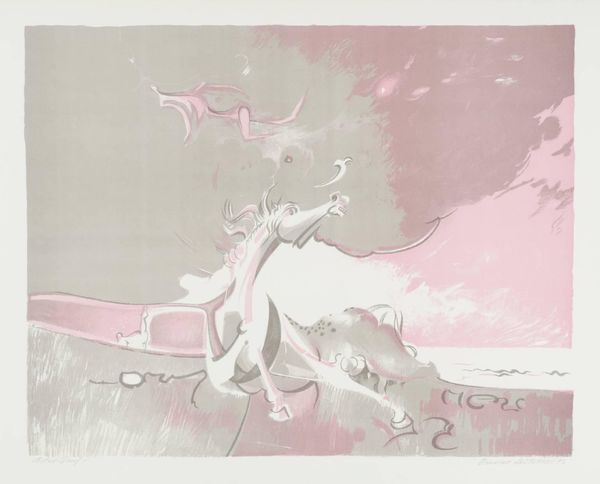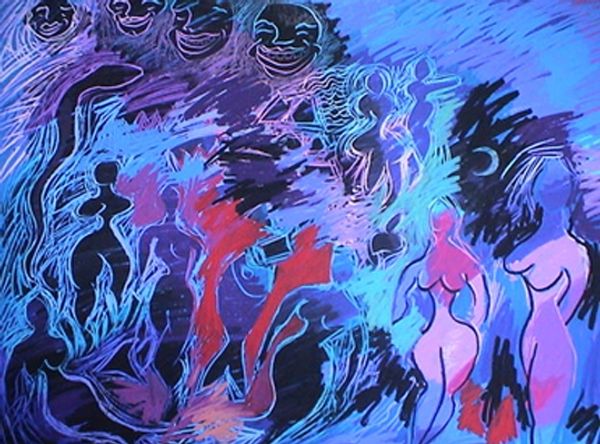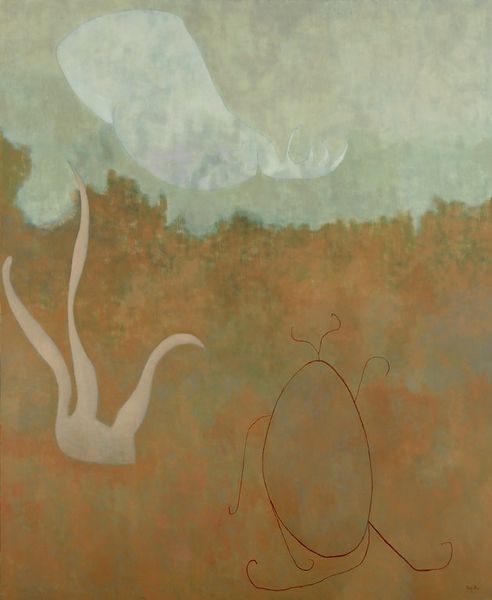
Dimensions: support: 2292 x 1993 x 49 mm
Copyright: © Inka Essenhigh | CC-BY-NC-ND 4.0 DEED, Photo: Tate
Curator: Looking at Inka Essenhigh’s “Born Again” in the Tate collection, what immediately strikes you about this rather large piece? Editor: The overall effect is quite unsettling. There's a strange tension between the fluid, almost whimsical forms and the muted, earthy palette. Curator: Essenhigh’s work often plays with the boundary between abstraction and figuration. Consider how the figures, despite their distortion, retain a sense of movement and interaction. How does this inform the meaning? Editor: I think she's tapping into anxieties around contemporary life, possibly critiquing societal pressures through these warped bodies and bizarre relationships in a post-internet age. Curator: I agree; there's a commentary on the grotesque. The flat, almost graphic style, also emphasizes the artificiality. It is a fascinating collision of the beautiful and the bizarre. Editor: Yes, I leave with an intense feeling of displacement. It is strange and yet, somehow, all too familiar.
Comments
Join the conversation
Join millions of artists and users on Artera today and experience the ultimate creative platform.
tate 8 months ago
⋮
Born Again is a large painting depicting a group of deformed figures in an olive green landscape. The image is dominated by a light green, swirling flash across the diagonal centre of the painting, which creates a sense of energetic movement. In the lower left hand corner, the largest figure is made up of green colours as well as the more fleshy colour of most of the other figures. It is surrounded by areas of green which connect it (visually and literally) to the central light green flash. Diagonally opposite, on the other side of the green flash, another figure appears to be emerging from the light green area. A neck and torso, arched violently backwards, and a leg seem to be pulling themselves out of greyish brown, mouth-like nodes. Behind this figure, smaller figures seem to be popping out of the ground. One of them is joined by another energetic curving and zig-zagging pale green line to a similar-coloured body, which hovers over the horizon in an explosive pale blue field. Essenhigh has written that the painting is set in the bland heartland of America. At the top is a light that is both an alien spaceship and an angel that is like a sunrise. The light creates a chain reaction or chemical reaction (such as photosynthesis), that causes the people in the painting to be born again. I think of the figure in the lower left as being underground. He is a seed or an embryo which under the proper conditions will be born again … this painting is by no means a purely ironic view of Christianity. I hope to convey a sense that I too could be a part of a group experience, something which could take me out of my head.(Faxed communication from artist, June 2000). Essenhigh's figures evoke such terms as humanoid, cyborg, hybrid and mutant. They combine human elements with strange, garment-like body parts and mechanistic, prosthetic extensions. Amputated or fragmented and reconstituted, Essenhigh's figures and forms suggest both technological intervention and the kind of deformation through melting characteristic of the paintings of Surrealist Salvador Dalí (1904-89). Her use of flat colour and fine, mostly dark outlines around her figures emphasises their cartoon-like quality. Essenhigh paints onto a very smooth surface produced by sanding layers of primer already applied to the canvas. She uses rapid-drying, enamel-based oil paint to create first large areas of monochromatic colour, which constitute the background, and then groups of finely delineated figures. Drawing is the basis for all her images. She refers to her paintings as 'giant drawings' (quoted in Dreishpoon, p.3). The paint surface is highly glossy and Essenhigh's colours are often the synthetic tones of interior decorating. These technical facts contribute to making Essenhigh's organic, morphing forms feel inorganic and synthetically produced. She has called her scenarios 'a look back to the future' (quoted in Hoptman, p.75), reinforcing their science-fiction connotations. Man (or woman) merging with machine has been depicted in art since the early twentieth century, becoming increasingly bleak as a vision after the mass-destruction, by machines, of the World Wars. Essenhigh's paintings produced at the end of the 1990s, bearing such titles as Large Fire 1998, Ozone Hole 1998, Explosion 1999 (all private collections) and Deluge 1998 (Albright Knox Gallery, Buffalo), like Born Again, have a millenial twist. Set in her typically bland environments, they revive the eighteenth-century theme of apocalyptic natural disasters in a contemporary world of plastic, prosthetics and cartoons. Further reading:Douglas Dreishpoon, American Landscapes: Recent Paintings by Inka Essenhigh, exhibition catalogue, Albright Knox Art Gallery, Buffalo 1999Laura Hoptman, 'Nothing Natural', Frieze, no.47, pp.74-5Hybrids: International Contemporary Painting, exhibition catalogue, Tate Liverpool 2001, pp.22-5, reproduced (colour) p.23 Elizabeth ManchesterApril 2002
